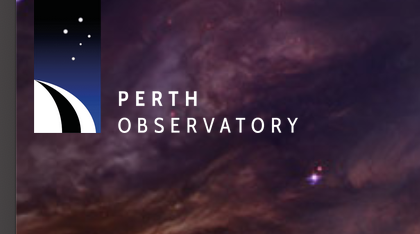UWA Wallal Expedition Centenary
The 1922 Eclipse Expedition
On 1922 August 20, a 20-strong scientific team, together with a naval party of 10, left Fremantle on one of the major scientific expeditions in Western Australian history. After picking up further personnel at Broome, the party proceeded to the isolated post and telegraph station of Wallal on the northern coast of Western Australia. Their task was to measure with great care the deflection of starlight by the Sun during the total solar eclipse of 1922 September 21. Specially designed photographic equipment of very high quality was used and meteorological conditions were excellent. As a result, measurements were obtained for well over a hundred stars.
Led by UWA Professor Alexander Ross, the expedition to the north coast of Western Australia was a heroic effort involving astronomers, filmmakers, aviators, physicists, mathematicians, computer scientists, and the Indigenous Nyungumarta people who welcomed the group to their land.
This is a story of science, sailing ships, surf and donkeys, and innovative ideas that changed our understanding of space, time and gravity, and showcased Western Australia as a significant player in world science. This set the stage for recent discoveries of black holes and neutron stars crashing together to create powerful explosions that send gravitational waves echoing across the universe.
UWA WALLAL Expedition Centenary
This September, The University of Western Australia is celebrating the centenary of the Wallal eclipse expedition - an iconic event that proved Albert Einstein’s theory of relativity.
As part of the centenary celebrations, visit the Winthrop Hall Undercroft for a special exhibition created by scientists, educators and renowned WA artist Mark Grey-Smith, designed to take you on a journey that starts in Wallal and finishes with the astonishing discoveries of black holes all over the universe.
Or join us for public lectures with internationally acclaimed physicist, cosmologist, and astrobiologist Regents' Professor Paul Davies AM, and Australian astrophysicist and ABC presenter, Professor Tamara Davis AM.
Or, register for FREE talks and workshops for school students on topics from black holes to quantum computers.
West Australian Museum WALLAL Article
Wallal, Western Australia The most ideal place on Earth to confirm Einstein’s theory.
Wallal Downs Station, a remote station 300 kilometres south of Broome on Eighty Mile Beach, was deemed ‘the most ideal place on Earth to view a total eclipse of the Sun and prove Albert Einstein’s Theory of General Relativity.
Read the article and see photos taken in 1922.
Wallal Centenary Australia Tests Einstein's Theory - $5 1oz Silver Domed Proof Coin 2022
Buy this unique Coin.
In 1922, the world focused on an expedition of international and Australian scientists to Wallal, Australia. The conditions in this remote corner of WA were ideal for photographing a total eclipse that was due on 21 Sept 1922.
The photographs taken during this ground-breaking expedition allowed for the precise measurements of the apparent position of the stars near the eclipsed Sun. This gave scientists the evidence that proved Albert Einstein’s revolutionary Theory of General Relativity! Discover a moment in history.
Wallal Expedition Centennial Talk
Learn more about this expedition, what it meant for astronomy and Einstein’s Theory, and the role Perth Observatory played, through a talk from Perth Observatory volunteer Arthur Harvey. Stay late and have a look through our Calver telescope, or book in on a special tour on the days leading up to the talk to get to look through our Calver telescope and get taken back 100 years in astronomical history.
Adult: $30
Concession: $25
Child (Ages 5 to 17): $20
Location: Perth Observatory
Date: Saturday, 24th of September
Time: 7:00 pm (Doors open at: 5:30 pm)





